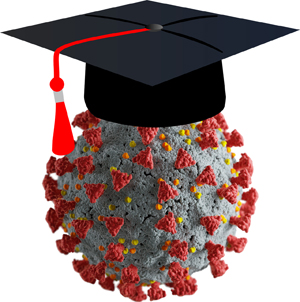School Closures Threaten Phlebotomy Workforce
Fewer students are available to fill phlebotomy positions
by Dennis Ernst • June 09, 2020

The outbreak of Covid-19 and the resultant social distancing mandate is having a profound impact on the pool of trained phlebotomists entering the workforce.
Since phlebotomy and many other allied healthcare programs rely heavily on hands-on training and one-on-one mentoring, the need for close contact has forced many schools to close their classrooms until the pandemic passes. While that may seem to be the most prudent approach from a public welfare standpoint, the impact it has on the workforce cannot be understated. When students are unable to complete their required training and clinical rotations, the workforce suffers proportionally from an immediate and critical shortage of qualified applicants.
A recent Associated Press article, "For Trade Students, Online Classes Can't Replicate Hands-on," discusses the problem phlebotomists and other technical students face in the interruption of their training. Instead of graduating and entering the workforce immediately, most are having to accept they won't be able to finish their training and become marketable in the workplace until the fall. The delay can be devastating, especially for those in households whose income from other wage-earners has already been ravaged for the same reason. For some, the interruption of training in a highly marketable skill, like phlebotomy, forces students back to unskilled positions, perhaps indefinitely.
It's not just phlebotomists. Cosmetology, massage therapy, law enforcement, welding, nursing and scores of other professions are being challenged to bring students to workforce-ready amid today's Covid restrictions. According to the article, 8.4 million students are seeking post-secondary certificates and degrees in career and technical education fields. Not only is an interrupted education devastating to the student, it's devastating to the healthcare industry. Should even half of them experience delayed entry into the workforce, a huge vacuum of qualified candidate threatens to cripple healthcare employers and their ability to deliver healthcare safely and effectively.
At a time when phlebotomists are becoming increasingly critical as front-line responders to the Covid-19 crisis, the bottleneck in the conversion of new students to qualified applicants couldn't have come at a worse time. Unfortunately, solutions to this problem are linked and limited to the recommendations and restrictions of federal and regional governments and agencies. Time, however, will ultimately open the bottleneck, releasing students at long last to become employed in the profession of their choice, if they can hang on. Then comes the double-whammy, The sudden release of a backlog of students will create a huge pool of job-seekers flooding the market. The increased competition between applicants will be fierce. What's unclear at this writing is whether the release of students into their clinicals and hence the workforce will be as intense as a breaking dam or as gradual as a rising tide.
overall rating: my rating: log in to rate
